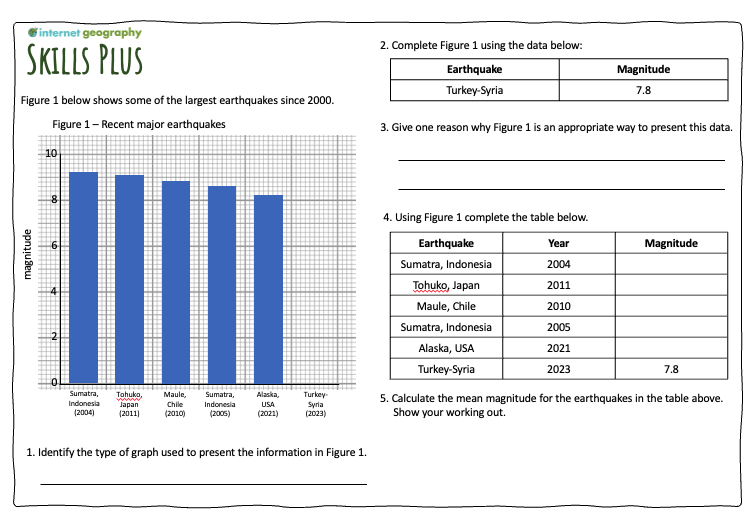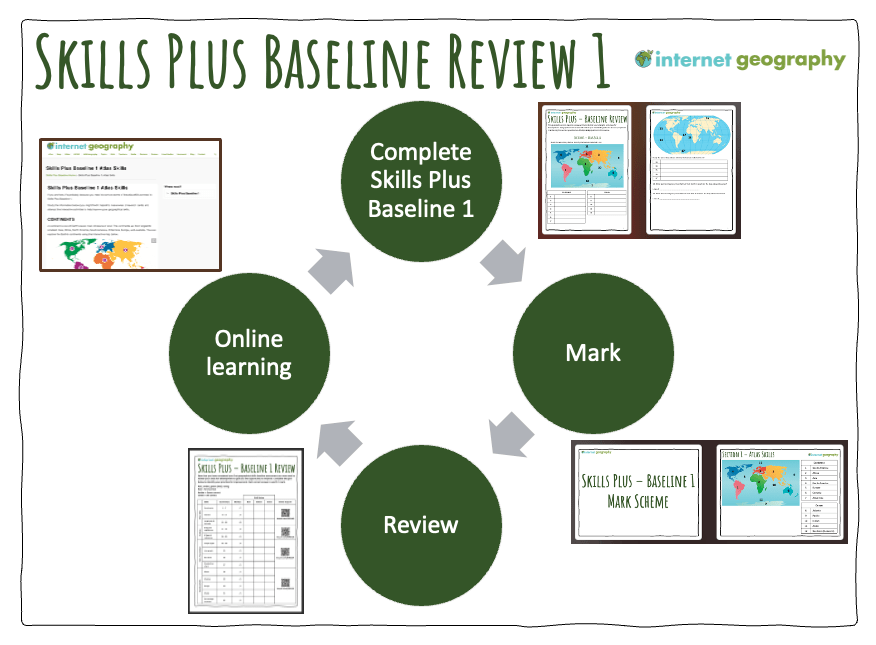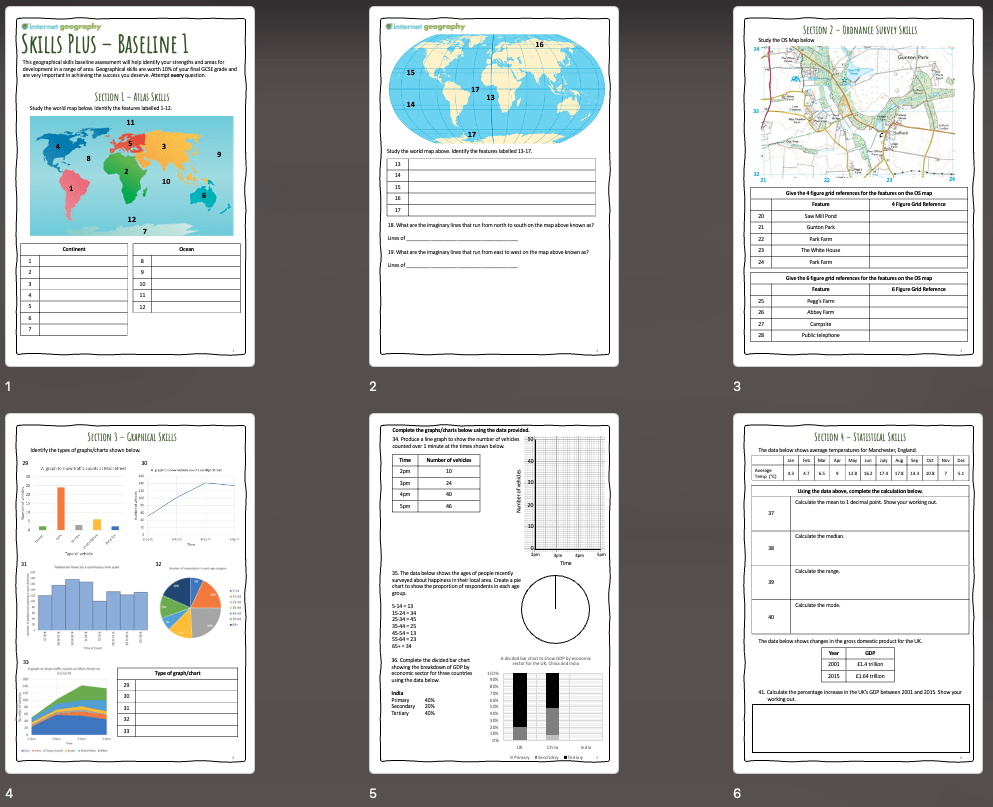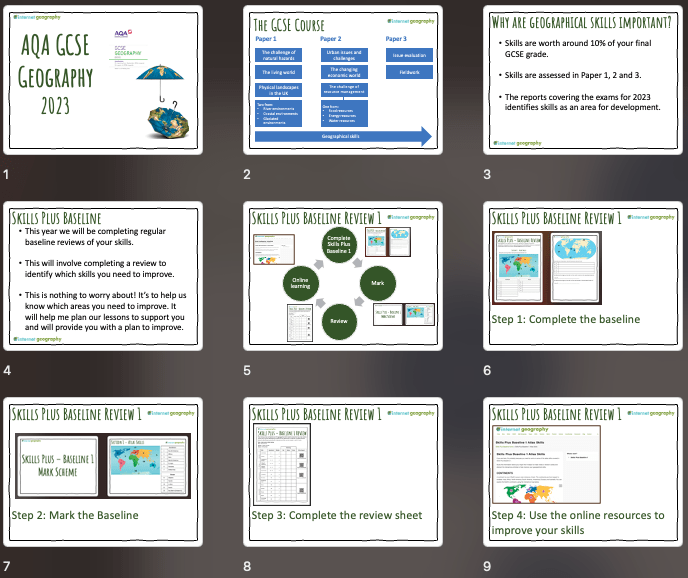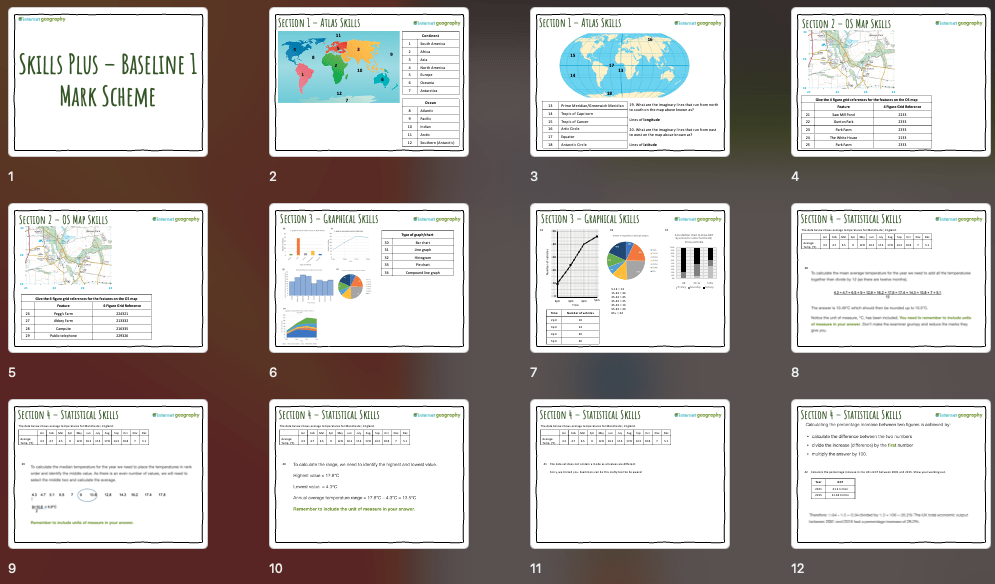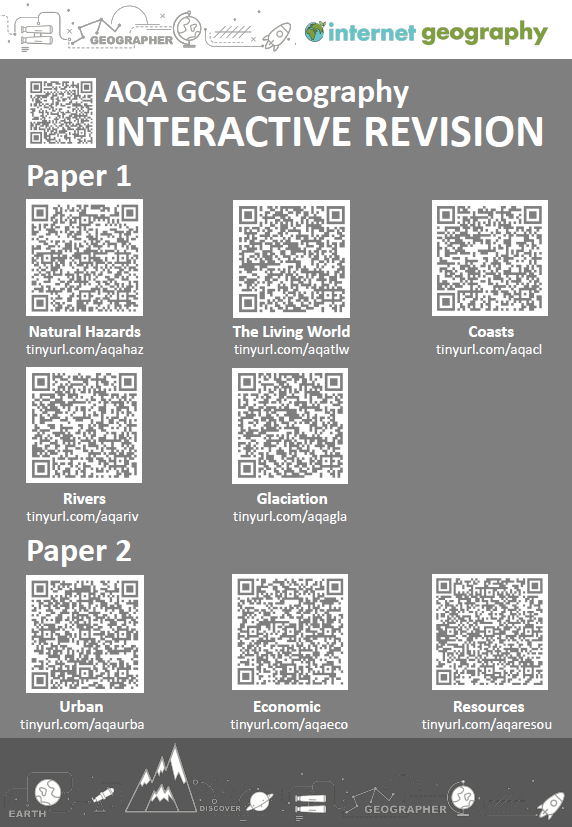Improve Geographical Skills with Skills Plus
Feedback from the recent AQA GCSE Geography examiner’s report suggests that geographical skills are an area for development. Given that geographical skills are worth 10% of the GCSE, across three papers, we’ve been thinking about how Internet Geography Plus can support you in improving students’ geographical skills. Considering so many skills are covered in the AQA GCSE specification, we felt a quick fix wouldn’t be enough. Therefore, this year, we are developing several sets of resources to support you, including:
- Skills Plus
- Skills Plus Baseline Assessments
What is Skills Plus?
Skills Plus is a collection of activities that focus on applying geographical skills in the context of the units covered by the specification. Each Skills Plus sheet focuses on one or two skills, and questions are based on a particular unit. They are short, focused activities that can be used as starter or plenary activities. They can also be issued to individual students if there is a particular area for development identified from assessments or intervention sessions etc. Each Skills Plus resource is editable and includes a mark scheme to reduce your workload.
Subscribers can access the first of these resources in the new Skills Plus area of Internet Geography Plus. We’ll be adding new Skills Plus resources regularly over the coming year. If you have a specific request, please get in touch. Not got access to Internet Geography Plus? Please purchase a low-cost annual subscription to access these and over a thousand other resources.
Skills Plus Baseline Assessments
As well as Skills Plus, we are developing a comprehensive, planned approach to developing geographical skills through our new Skills Plus Baseline Assessments. The approach involves:
- Students complete a baseline assessment covering various geographical skills.
- Students assess their performance (a mark scheme is provided, including a PowerPoint that can be used to take the students through the answers).
- Students complete a review sheet to RAG rate their performance across the different skills (a PowerPoint is also available for you to deliver this)
- Students use QR codes/web links to access resources on Internet Geography to support improving their identified areas for development.
- The assessment can be repeated later to review progress.
We’ll be adding a number of Skills Plus Baseline assessments to Internet Geography Plus over the coming year, which review the range of geographical skills identified in the specification (and a few relevant extras). As there are so many skills to cover, we have decided to divide the skills and produce a series of baseline assessments this academic year.
The first Skills Plus Baseline Assessment (see image below) is now available to Internet Geography Plus subscribers.
The first Skills Plus Assessment addresses relatively basic geographical skills students should know. However, we have included a couple of more challenging elements so that most students will have areas for development!
Each Skills Plus Baseline will cover a range of atlas, OS maps, graphical, and statistical skills.
An introduction PowerPoint is available to download to support you in launching the Skills Plus Baseline.
Once the students have completed the Skills Plus Assessment, they will self-assess using the provided mark scheme, which includes a PowerPoint presentation that you can use to take the students through the processes.
Students then review their performance using the Skills Plus Baseline Review (see below). There is a PowerPoint to guide students through this process on Internet Geography Plus.
The completed review sheet will help students identify their priorities for skills development. The review sheets include a QR code/link to free-to-access online resources on Internet Geography that students will use to improve their geographical skills. These pages are now available to access.
We’re working on a spreadsheet to identify which geographical skills are covered in this and future assessments. Hopefully, it will be a helpful tracking tool that provides a clear overview of the skills that have been/will be covered. It can also be shared with those delightful OFSTED people, if you are lucky enough to have a visit, to illustrate how you are taking a systematic approach to skills development.
Subscribers can now access the new Skills Plus Baseline and Baseline Review in the new Skills Plus area of Internet Geography Plus. Mark schemes and presentations will be added later today.
We’ll be adding further baseline assessments over the coming year. If you have a specific request, please get in touch. Not got access to Internet Geography Plus? Please purchase a low-cost annual subscription to access these and over a thousand other resources.
AQA GCSE Geography Interactive Revision Resources
Did you know? Students can access a growing collection of free interactive resources on Internet Geography to support revision and retrieval.
We’ve compiled a PDF file you can share with students containing QR codes and short URLs so they can get straight to the area they want to revise. Just click the image below to download.
India is close to passing China to become the world’s most populous nation
According to data from the United Nations, India is on track to surpass China as the world’s most populous country by June 2023. India’s population is projected to reach 1.4286 billion, approximately 2.9 million more than China’s 1.4257 billion. The two Asian countries have represented over a third of the global population for over seven decades.
China’s birth rate has recently plummeted, decreasing its population last year for the first time since 1961. The United Nations Population Fund (UNFPA) State of World Population Report’s forecast for India is estimated, as no census has been conducted in the country since 2011. The 2021 census was cancelled due to Covid and rescheduled for 2022, but it has now been postponed again to 2024.
The UN’s Chief of Population Estimates and Projection, Patrick Gerland, said that any numbers regarding India’s actual population size are “naïve assumptions based on fragmentary information,” as no official data is available. Furthermore, the UN’s estimate does not account for the populations of China’s Special Administrative Regions, Hong Kong and Macau, or Taiwan, totalling over 8 million people.
In November, the global population surpassed 8 billion, but experts note that growth has slowed considerably, reaching its lowest rate since 1950.
One of the primary reasons for India’s increasing population has been the difference in fertility rates between the two countries. Historically, India has had a higher fertility rate than China, which means that, on average, Indian women have more children than their Chinese counterparts. Over the past few decades, both countries have experienced a decline in fertility rates, but India’s rate has remained higher than China’s.
China’s strict population control measures, mainly the one-child policy implemented in 1979, significantly curbing population growth. The policy was relaxed in 2015, allowing couples to have two children, but the impact of this change on China’s population growth has been limited. In contrast, India has implemented various family planning initiatives, but it has never adopted a stringent policy like China’s one-child rule. This difference in approach has contributed to India’s higher fertility rates and overall population growth.
Another critical factor in India’s population growth is its age structure. India has a relatively young population, with a median age of around 28 years, while China’s median age is approximately 38 years. This youthful population means that there are more people in their reproductive years in India, which contributes to a higher number of births and subsequent population growth.
Rural-to-urban migration has been another driving force behind India’s population growth. In search of better opportunities and higher living standards, millions of Indians have migrated from rural areas to urban centres, leading to rapid urbanization. While urbanization has also occurred in China, India’s urban population growth has been more pronounced. The increased population density in cities has contributed to higher fertility rates in urban areas, further fueling population growth.
Socio-cultural factors have also played a role in shaping the population trends of both countries. In India, there has been a preference for larger families, particularly in rural areas, where children are often seen as economic assets which can contribute to the household income. Furthermore, the preference for male children has led some families to continue having children until they have a son, contributing to higher fertility rates.
A UNFPA-commissioned survey found that most Indians believe their population is too large and fertility rates too high, with nearly two-thirds of respondents citing economic concerns related to population growth. However, demographers argue that India’s population overtaking China’s should not be seen as a concern but as a symbol of progress and development, as long as individual rights and choices are respected, as stated in the UN report.
Further Reading
UN World Population Prospects 2022

